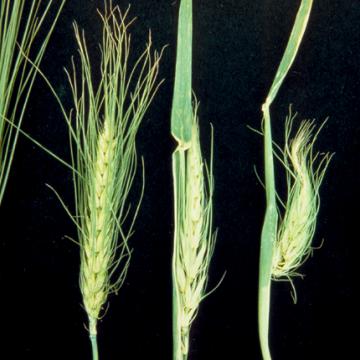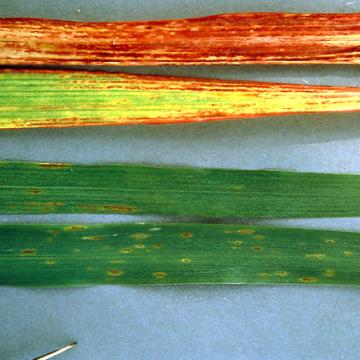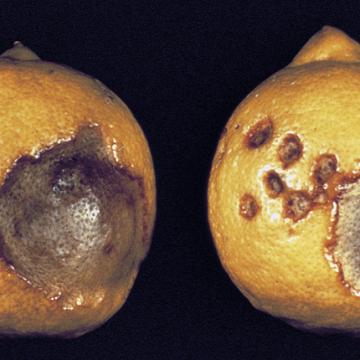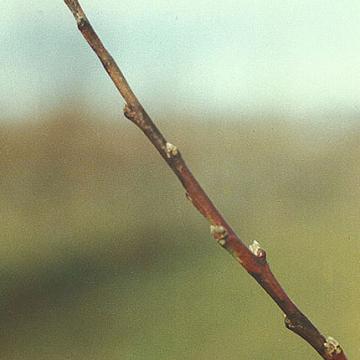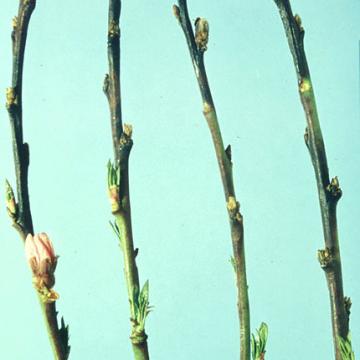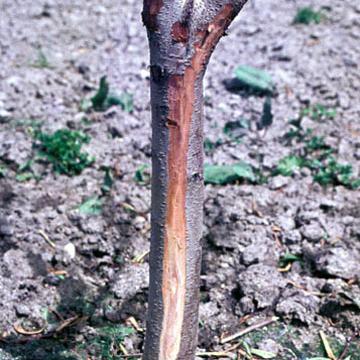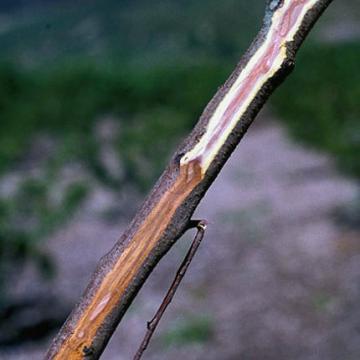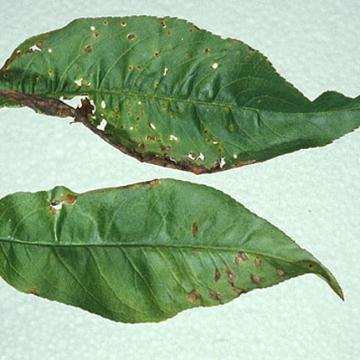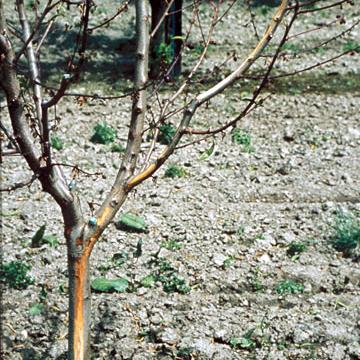DISEASE: Aster yellows
HOST: Barley
Infection by this phytoplasm causes twisted awns and sterile florets.
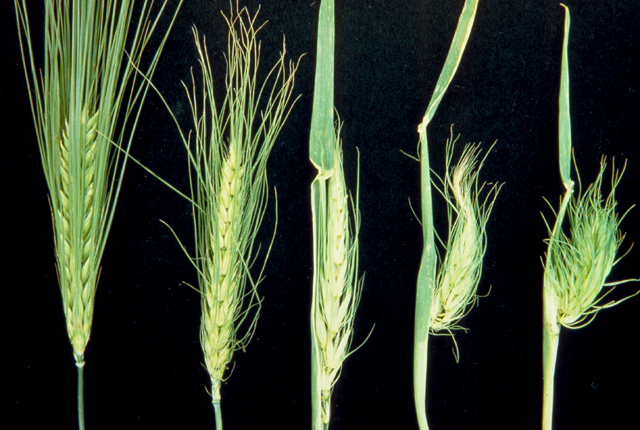
Aster yellows | Barley
DISEASE: Aster yellows
HOST: Barley (Hordeum vulgare)
PATHOGEN: 'Candidatus Phytoplasma asteris'
PATHOGEN SYNONYM: Phytoplasma Aster yellows group
SOURCE: E. Banttari
DISEASE: Aster yellows
HOST: Barley
Small necrotic spots on lower leaves and red coalescing streaks on upper leaves.
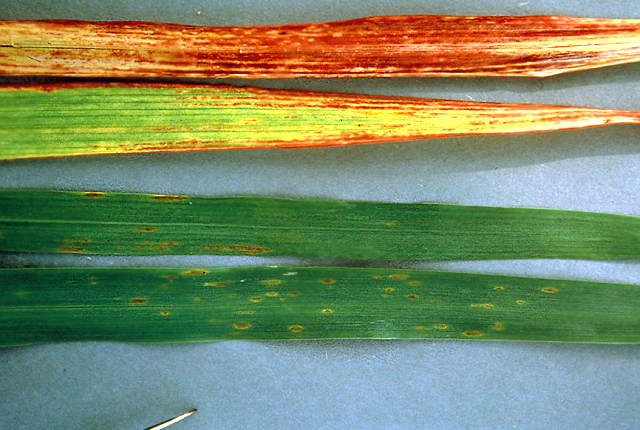
Aster yellows | Barley
DISEASE: Aster yellows
HOST: Barley (Hordeum vulgare)
PATHOGEN: 'Candidatus Phytoplasma asteris'
PATHOGEN SYNONYM: Phytoplasma Aster yellows group
SOURCE: E. Banttari
DISEASE: Bacterial blast and black pit
HOST: Citrus (Lemon)
The term "black pit" refers to black lesions on fruit, which may be specks or large, sunken pits as seen here. They also may be light tan, later becoming reddish brown to black.
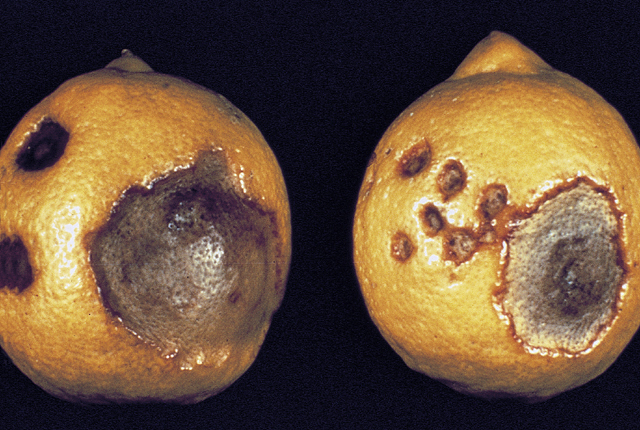
Bacterial blast and black pit | Citrus (Lemon)
DISEASE: Bacterial blast and black pit
HOST: Citrus (Lemon) (Citrus limon)
PATHOGEN: Pseudomonas syringae pv. syringae
SOURCE: J. Menge
DISEASE: Bacterial dieback of nectarine
HOST: Nectarine
Dark cankers on last year's twig. Symptoms of bacterial dieback of nectarine are identical to those of bacterial dieback of peach.
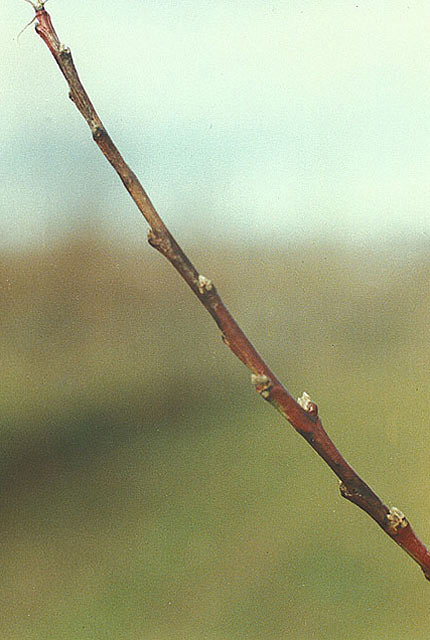
Bacterial dieback of nectarine | Nectarine
DISEASE: Bacterial dieback of nectarine
HOST: Nectarine (Prunus persica var. nucipersica)
PATHOGEN: Pseudomonas syringae pv. persicae
SOURCE: J. Young
DISEASE: Bacterial dieback of nectarine
HOST: Nectarine
Diseased young twigs.
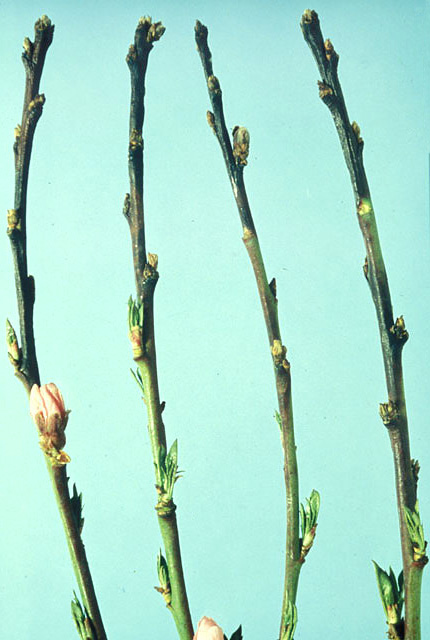
Bacterial dieback of nectarine | Nectarine
DISEASE: Bacterial dieback of nectarine
HOST: Nectarine (Prunus persica var. nucipersica)
PATHOGEN: Pseudomonas syringae pv. persicae
SOURCE: J. Young
DISEASE: Bacterial dieback of nectarine
HOST: Nectarine
Bacterial invasion of trunk caused reddish brown discolored area. Symptoms of bacterial dieback of nectarine are identical to those of bacterial dieback of peach.
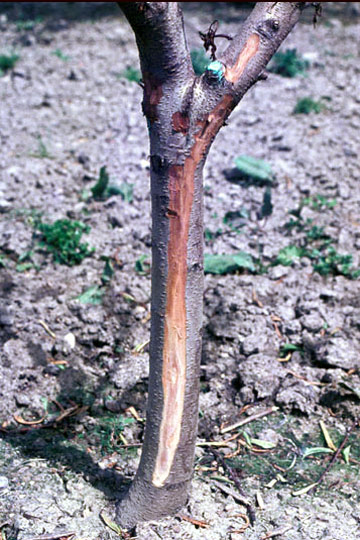
Bacterial dieback of nectarine | Nectarine
DISEASE: Bacterial dieback of nectarine
HOST: Nectarine (Prunus persica var. nucipersica)
PATHOGEN: Pseudomonas syringae pv. persicae
SOURCE: J. Young
DISEASE: Bacterial dieback of nectarine
HOST: Nectarine
Discolored vascular tissues and gummosis on infected twig.
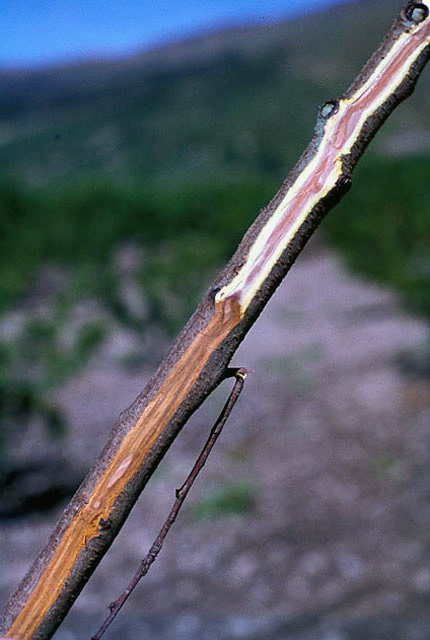
Bacterial dieback of nectarine | Nectarine
DISEASE: Bacterial dieback of nectarine
HOST: Nectarine (Prunus persica var. nucipersica)
PATHOGEN: Pseudomonas syringae pv. persicae
SOURCE: J. Young
DISEASE: Bacterial dieback of nectarine
HOST: Nectarine
Symptoms of the disease include leaf spots (top leaf). Similar appearing leaf spots may be caused by Xanthomonas arboricola pv. pruni (bottom leaf).
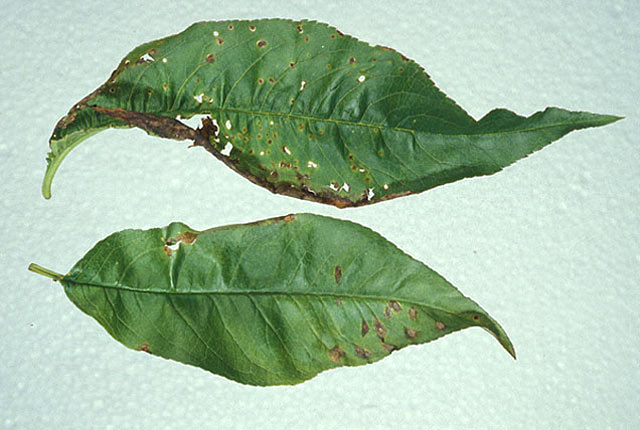
Bacterial dieback of nectarine | Nectarine
DISEASE: Bacterial dieback of nectarine
HOST: Nectarine (Prunus persica var. nucipersica)
PATHOGEN: Pseudomonas syringae pv. persicae
SOURCE: J. Young
DISEASE: Bacterial dieback of nectarine
HOST: Nectarine
Dying tree caused by systemic invasion of the bacterium. Symptoms of bacterial dieback of nectarine are identical to those of bacterial dieback of peach.
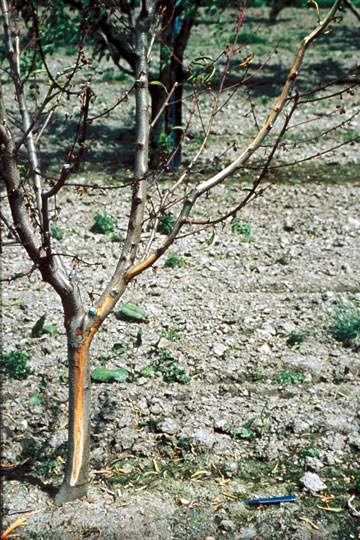
Bacterial dieback of nectarine | Nectarine
DISEASE: Bacterial dieback of nectarine
HOST: Nectarine (Prunus persica var. nucipersica)
PATHOGEN: Pseudomonas syringae pv. persicae
SOURCE: J. Young


